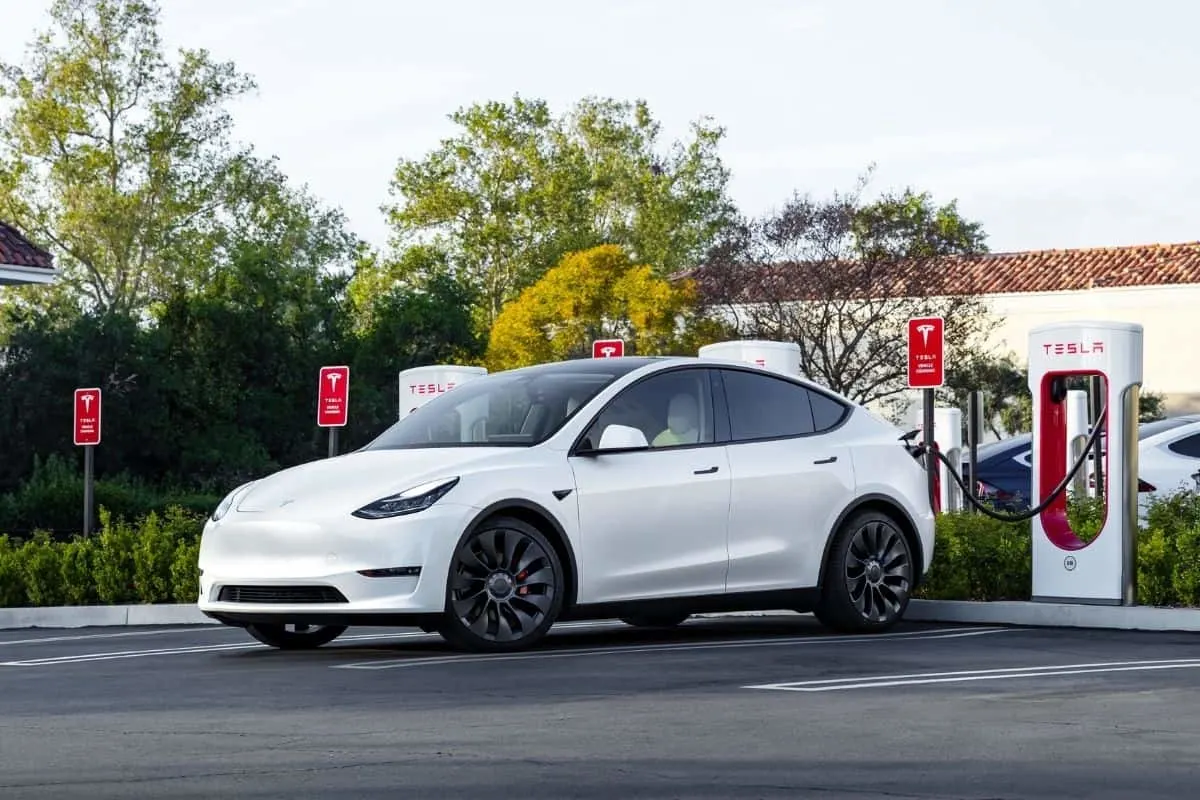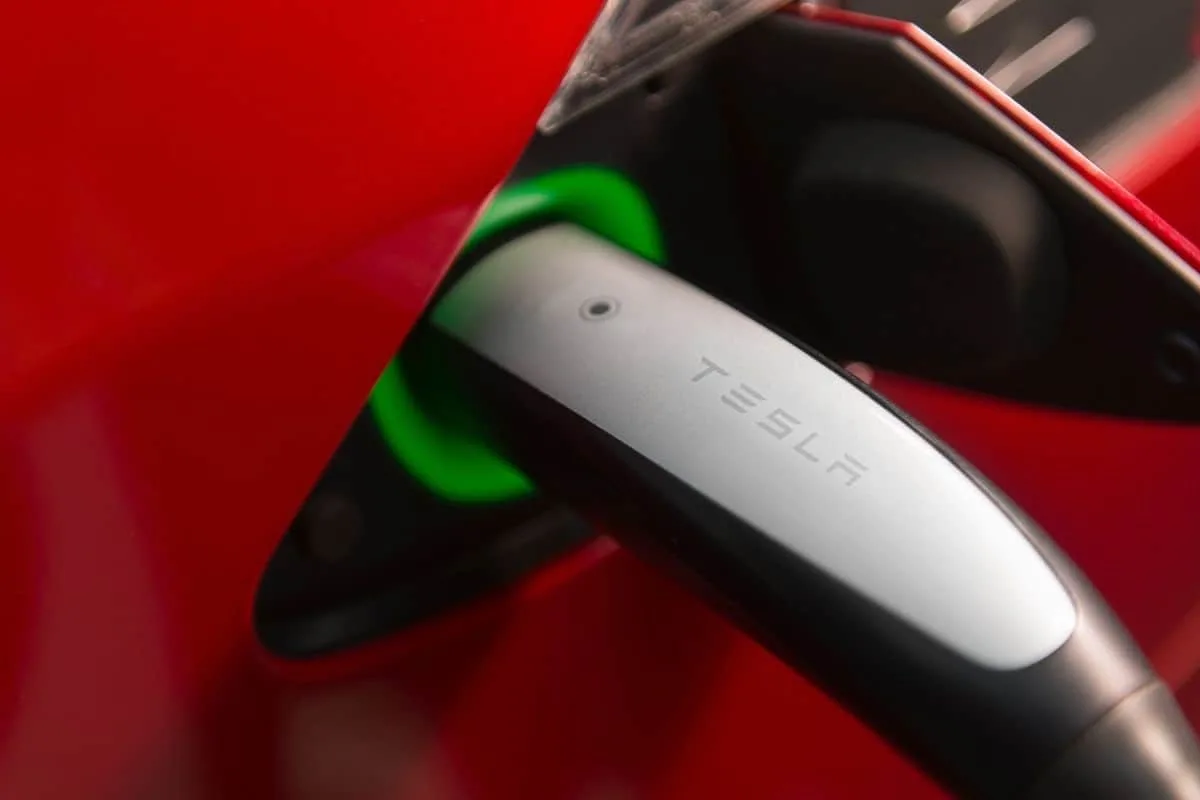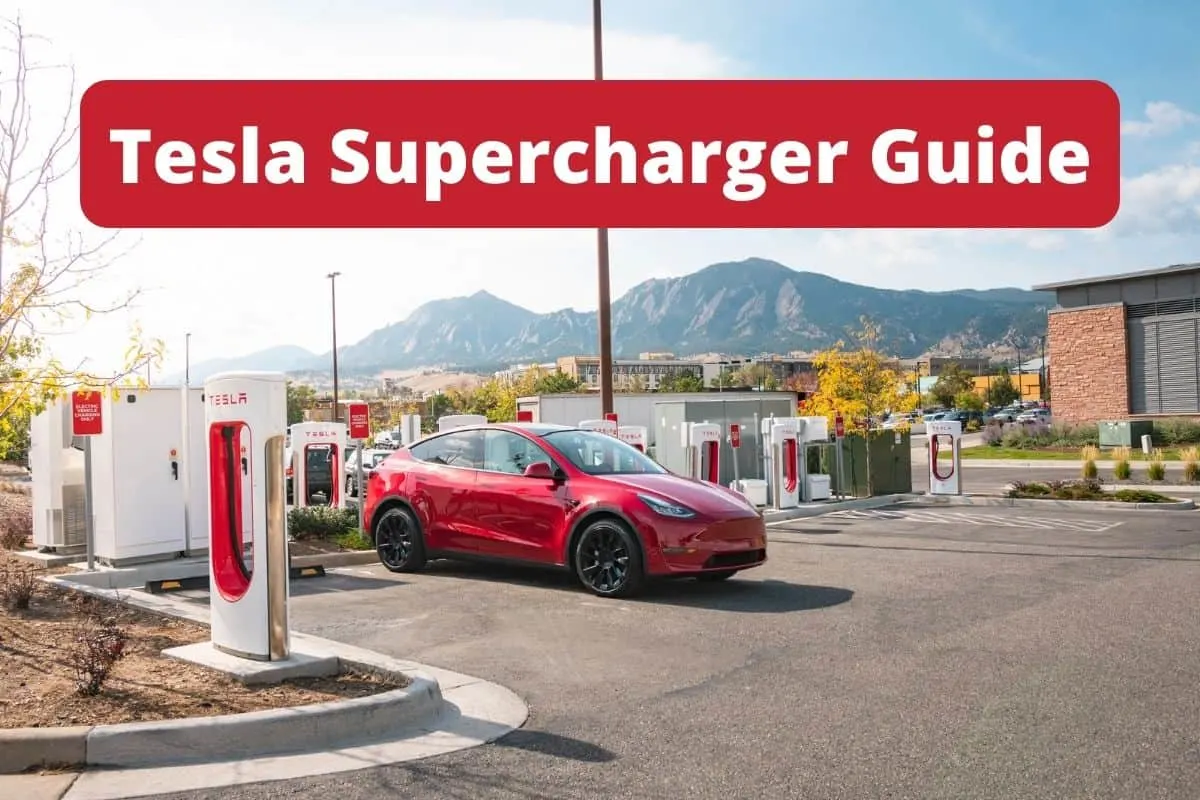Tesla has changed the way drivers think about electric cars. They combine a futuristic design, high-tech interiors, and outstanding performance.
Whether you choose the Model X crossover, Model S hotrod, Model Y, or Model 3, Tesla promises to bring a new driving experience to its all-electric lineup. Let’s explore what it is like to own a Tesla from a charging standpoint!
Tesla Superchargers Explained
You can charge your Tesla at home or over 30,000 superchargers worldwide and over 4,500 destination charging sites. The number of superchargers and destination charging sites continues to grow steadily, promising even more options in the future.
Supercharging stations allow you to stay charged when you are on the go.
At a supercharging station, you can charge your Tesla while you get a cup of coffee, grab a snack, and take a break from driving. Tesla offers a map of superchargers, so you can plan your trip.
Currently, Tesla has the largest network of charging stations in the world, and it continues to grow. Tesla offers an app that allows you to plug in your location and destination, and it will plan a route for you with superchargers where you need them.
If you are a business owner, you can get in on the wave and install a supercharger on your business property. Installing a supercharger means that your business will be found when people search for a supercharger in the area.
This is one way Tesla encourages the growth of its charging network!

How to use a Tesla Charging Station
Charging a Tesla is easy! Every EV car has a charge port, or sometimes two, that allows you to connect your charging cables.
The charge port on a Tesla is located on the left side in the rear of the vehicle. It is beside the rear taillight. The charge port door is designed to be integrated into the design, so it is barely visible.
Tesla makes four different charger plug types. You will need adapters to connect them to various types of chargers. The type of charger plug can affect the charging speed.
To open the charge port door, you bring the charging cable near the door and press the button on the cable. If you do not have your key with you, it will not open. The door opens automatically when you press the button, or you can open it using the Tesla app.
For here, it is just like charging your cell phone. All you have to do is plug in the cable and the charging will begin automatically. A light located near the charge port will turn blue when the charge is beginning.
When the charging has begun and is working correctly, the light will turn green. The green light will let you know if it is charging quickly or more slowly by the speed of the flash.
A fast flash means it is charging quickly, and a slow flash means it is charging more slowly.
If there is ever a problem during the charging process, the light will turn orange or red. The best solution is to unplug it and start again. You also might try a different charger or different charging stall.
Once the charge starts, the charge port will automatically lock the charger in place. This means you can leave your vehicle, and no one can tamper with it. You can use your app to unlock it and lock it again, as long as you have your key with you.
You can monitor the progress using the screen in the car, or you can use the Tesla app. This allows you to go about your business and know how much time is left until your car is ready.
When you return to your vehicle, you should press the button on the charging cable. When the ring around the charging port turns blue, you can remove the cable and replace it on the charging station.
Tesla Battery Care
One thing to note about your Tesla is that you should charge it before the battery becomes too low. Allowing your battery to drain to a low level over time can damage it, just as it will do with your cell phone. You should try to charge your battery when it gets down to 15-20%, but no lower.
You should also stop charging at around 85-90%. If you overcharge it once or twice, it is probably OK, but doing it continually can cause you to need a new battery sooner. You can set your Tesla to stop charging at the designated level when you plug it in, so you do not have to worry about overcharging.
Another nice thing about your Tesla is that when you are charging it at home, you can set it to charge at certain times of the day to avoid peak electricity rates. Some electric companies now offer an EV plan that gives you lower electricity rates for charging your vehicle.

How Long Does Charging Take?
The best part about a Tesla charging station is that you can charge up to 200 miles in only 15 minutes. By the time you take a little break from driving, you are ready to get back on the road.
One of the best parts is that you can plug in your Tesla and monitor its progress on an app. You can even have the app send you a notification when it is ready to go.
It is rare to need to charge over 80%, which means stops are quick and convenient. Some newer Superchargers charge at a rate of 250kW. You can charge your Tesla up to 25% faster if you use a battery preconditioner.
Tesla offers three types of Superchargers.
- Tesla Urban Superchargers
- Tesla V2 Superchargers
- tesla V3 Superchargers
Tesla Urban Superchargers offer a quick charge for owners who do not have access to charging at home or work. They are also good for a quick top-off when on a longer trip. They provide charging at up to 72 kW.
Tesla V2 Superchargers are strategically placed to allow owners to drive between major urban centers and across the nation. These chargers allow up to 150 kW speeds, but you have to split the charge with other cars at the same stall. This can double the time it takes to charge your car.
Tesla V3 Superchargers are the newest charging station.
You can charge up to 250 kW, and you do not have to split the charge between stalls. You can find V3 superchargers using the Tesla app.
The year and model of your Tesla also affect your charging rate. For instance, a new Tesla Model 3 will be faster than an older Tesla Model X. This is one thing to consider when deciding which Tesla to purchase.
Tesla Charging Etiquette
Some Superchargers will tell you where to get in line if all the stalls are full. At others, you will have to choose an out-of-the-way space to park while you wait on a stall.
Another thing to know is that some charging stations limit the charging level to 80%. This is because charging slows as the battery becomes full. This keeps things moving along so no one clogs the charging stall waiting for the last little bit.
You might want to know that you should return to your Tesla as soon as it is finished charging because some superchargers add an additional fee for cars that are left in the charging stall once they are at full charge.
This is to allow other Tesla owners to access the stalls promptly.
Are Charging Stations Free for Tesla?
The goal of Tesla is to be able to allow you the freedom to roam at a lower cost per mile over gasoline. You will never have to pay for gasoline again!
Charging is not free, but it is much cheaper than gasoline. If you have a home charging station, it is easy to think of running your Tesla as free, but your charging activities will be reflected on your energy bills.
When charging your Tesla at home, you can expect to pay about $9.75 in electricity costs to charge a 75 kWh battery from 0-100%.
This amount will be added to your electric bill, but it is considerably less than filling up at the pump. You can find offers and codes for free Supercharging, and they also offer referral codes that can save you money.
One thing that is convenient about a Tesla is that you do not have to insert a credit card to pay at the charger. All you do is pull up and plugin. The costs are billed directly to your Tesla account. There is no log-in because the charger will automatically recognize your car and the account.
Tesla makes adapters that will allow you to recharge your Tesla using a home outlet, but this takes considerably longer than a Supercharger. Many people choose to install a high-speed charging station in their home or use a mobile adapter if they live in an apartment.
If you want to charge it more quickly, you can always take it to a Supercharging station nearby.
Is Tesla Electricity Cheaper Than Gas?
Electricity is much cheaper than gas, depending on how often you drive and your driving habits. If you drive an average of 10,000 miles per year, and gasoline costs an average of $2.85 per gallon, you will save $4,300 over six years.
This calculation assumes a fuel economy of 28 miles per gallon when compared to a similar gasoline sedan. It also assumes that the average driver spends between $1,000 to $1,500 on gasoline per year. If you have a Model 3 and travel the same distance, your costs will be about four times lower than if you bought gasoline.
This also assumes an average cost for electricity of $0.13 per kilowatt-hour and the cost of charging. This is based on an average gasoline price of $2.85 per gallon for premium gasoline.
One thing to keep in mind is that some stations might charge as much as $.28 per kWh, and some charge by time and not the kWh.
Can Non-Tesla Cars Use a Supercharger?
Until November of 2021, no other electric vehicles could use Tesla Superchargers. Now, a small number of other EVs are beginning to allow charging at Tesla Superchargers as a pilot project.
Currently, the ability to charge other EVs on Tesla Superchargers is limited to the Netherlands. The technology to support other vehicles adds to the cost per charge, and this is passed on to the customer.
Rates vary by site, and some membership programs are available that can help lower the cost per kWh.
Now, you have a better idea of the nuances of charging your Tesla at a Supercharger!
Tesla continues to make charging easier with new technology and a growing network of Superchargers. Tesla continues to improve the Tesla ownership experience with better ways to use its technology.
